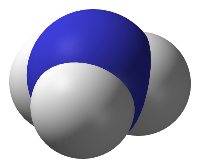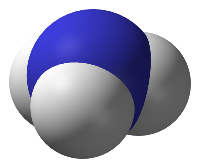Liquid Ammonia as Alternative Auto Fuel


EVs may well be the vehicle technology of the future, but it is too soon to know for sure. It may be that artificially produced fuels, such as ammonia, will become practical to replace petroleum-based fuels and internal combustion engines designed to run on those fuels will predominate.
Frank: Thanks for this. Please tell us all more about liquid ammonia as fuel. Matt Simmons of Peak Oil fame, with whom I’ve spoken a few times, really loves ammonia. But I have trouble understanding the attraction. OK, it’s another liquid, and the building out a new delivery infrastructure won’t be as arduous as it would be for hydrogen.
But do we really need it? Aren’t we fairly close to batteries that get the job done?
I don’t see big money betting on it — or even discussing the idea. What am I missing?

Craig, good questions! Ammonia will be one alternative among several to EVs. It can be used in a very similar fashion as gasoline or diesel are today. It can be made from electrical power, water and air. It does not pollute when processed correctly, either during making it, nor during its intended use. The infrastructure and the technology to make and to use it is readily available today. Gas or Diesel today is still a little cheaper but the gap is closing. At a diesel cost of about $ 7 at the pump green Ammonia will be fully cost competitive without subsidies. I am afraid we will see that price soon. The good part: Existing internal combustion engines can be converted. Ammonia tanks will be similar to propane tanks and will just be double in size to get the same mileage between fill ups (instead of a 20 gallon tank you would need a 40 gallon tank to drive 500 miles). Conversion of an existing car (injection, ignition and tank) is relatively cheap. The challenge: We have to make green Ammonia by using wind, and other renewable energy, much more than we have installed today. To compare to batteries: Hypothetically, to drive 500 miles on one battery charge in a Honda EV (not the same size vehicle), you would need a Li-ion/polymer battery with about 115 kWh storage capacity. At $ 500 per kWh (optimistic target cost) it would cost $ 57,000 , it would weigh about 1680 pounds. Such a battery is not really practical, nor is it commercially offered today. For commuting short distances EVs will work fine, for long distance it still is a problem. Charging great many cars at night may also pose a problem to the grid capacity in some places. If you like to get more detail on Ammonia and how it fits in the energy picture go to http://www.oceanenergy.org and search the NH3 tab.
Laurenz: Thanks very much for this very insighful response. I used it as the base of this post on Renewable Energy World:
http://www.renewableenergyworld.com/rea/blog/post/2010/06/liquid-ammonia-as-fuel.
I’ll be intereted to see the comments I get there — as well as any others I receive here. Thanks again. Great stuff. Please tell Matt I say hi.
Where do we think the electricity for batteries, of any kind, comes from?
Laurentz and Craig: just a brief comment.
Instead of diesel engine you can use fuel cell which is double more effective in terms of extracting internal energy from fuel. In its tern, fuel cell can be put into electrocar, which would allow to store about 180kWh of electricity in 15 gallons of ammonia. And in the beginning you can produce ammonia on nuclear power-plants, which would also solve the day/night discrepancy in electricity prices. You might be surprised if you’d look for difference in prices of nuclear-based electricity during night and day. Put the ammonia production facilities to France with 77% of nuclear produced electricity and you’ll get the same efficiency of ammonia for fuel cell based car as petrol for our current cars.